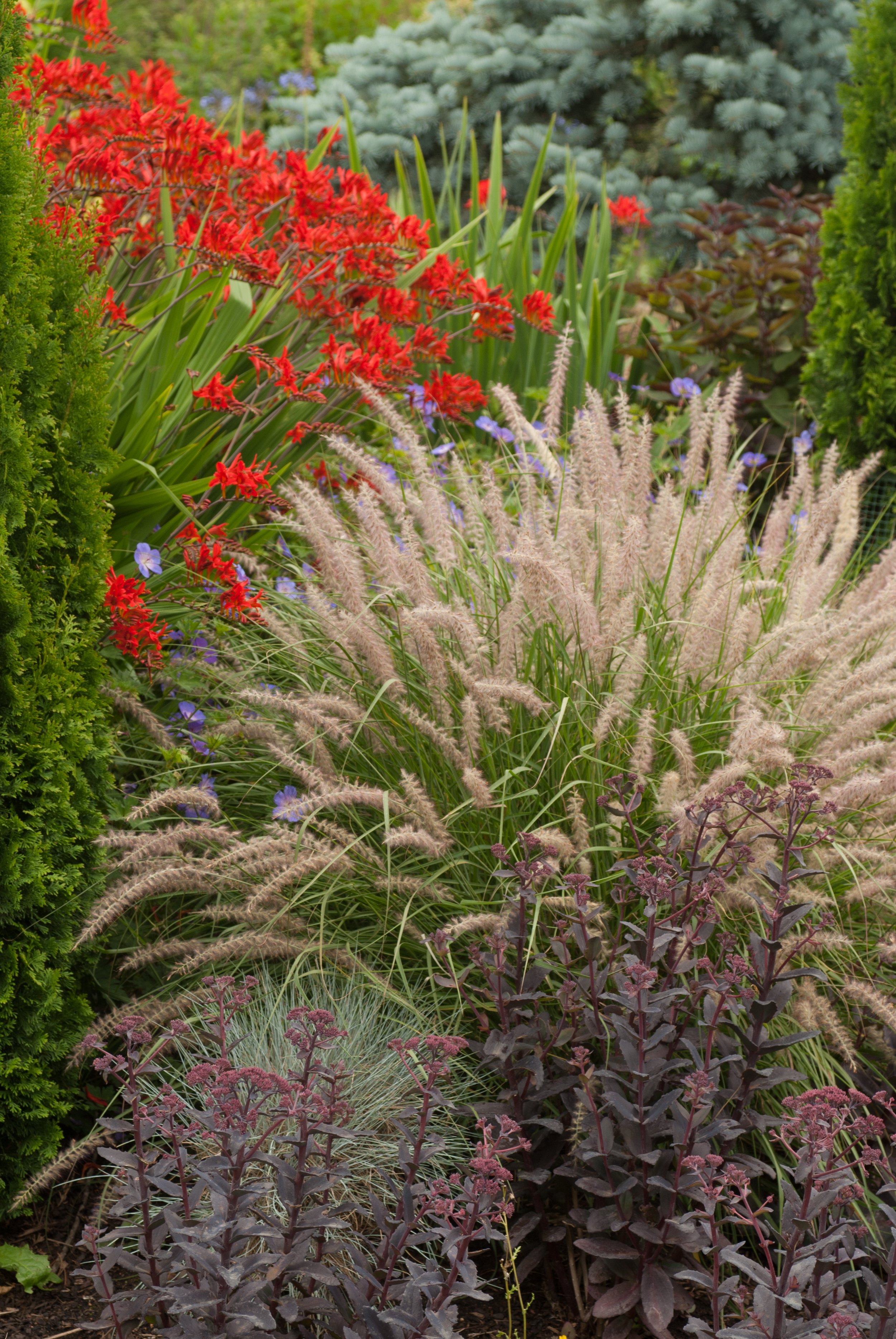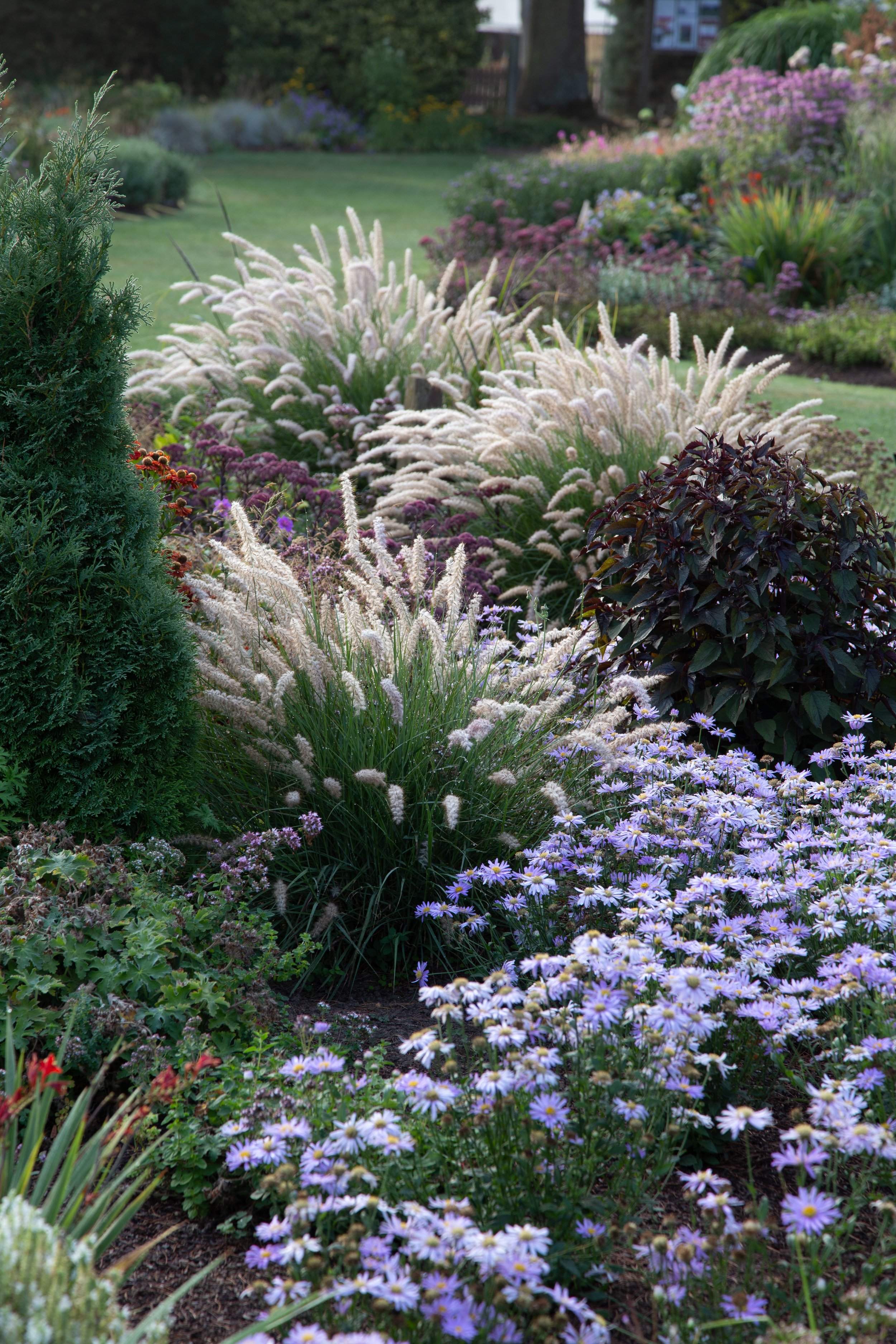Pennisetum orientale
This article appeared in The English Garden magazine
One of the most showy and adaptable of ornamental grasses, this species is always reliable, ideal for the smaller garden, and has a long season of interest. What else could a gardener wish for?
The images speak for themselves, but it is as well to know that the species originates from the sun-drenched countries from North Africa across to the Middle East, Turkey and the Caucasus to northwest India. So generally give it a sunny well-drained position in the garden, where it can have freedom and not be swamped by other plants. I have found it does quite well in light shade too.

In winter plants are dormant, and any remaining foliage should be cut to the ground by early spring. New growth is slow to appear, and (although it is hardy in the UK) just as you are about to wonder whether it is alive, slender new leaves appear in late spring to form a hummock of light green foliage. The ‘oriental fountain grass’ is the earliest to flower, erect, then later arching, flower spikes, purplish-pink when first open, later turning a pale beige and lastly white. This is a choice plant which doesn’t spread nor seed itself about, and works very well with conifers (and heathers) and small-growing perennials such as sedums. Repetition can draw the eye in frontal positions, and P. orientale can informally edge a pathway. Height 60-75cm (2-2.5ft).

From early summer to early winter this beautiful grass adds form, grace and movement to gardens of all sizes.
This sun-loving ornamental grass is native to North Africa, Saudi Arabia, Turkey, Iran and the Caucasus to northwest India, growing in open rocky areas, screes and hillsides. It forms a clump of narrow green leaves, and erupts into bloom with hairy purplish bottlebrush heads arching gracefully on 60--75-cm (2--2-1/2-ft.) stems from midsummer, earlier in hotter regions. These fade to off-white, then beige, and the foliage also has autumnal tones of gold, then brown. Given its origins, P. orientale needs sun, or part shade in warm climates, and good drainage. The flowers and foliage tend to collapse by midwinter, but can be left until it looks scruffy or to early spring before cutting back. It can be raised from seed, and established clumps can be lifted and divided in spring for replanting.

Plant combinations :

Plant partners: Perennials and Grasses
Autumn Melody
Different sedum, different heather, different season. Although Pennisetum orientale loses its impact as winter arrives, the fading plumes still made an effective show well into autumn. The flat heads of Sedum ‘Herbstfreude’ changed to a subdued crimson at the same time as flowers of Erica x darleyensis ‘Darley Dale’ are starting to show. The golden autumnal tones of Molinia caerula ‘Zuneigung’ behind complete the picture.




